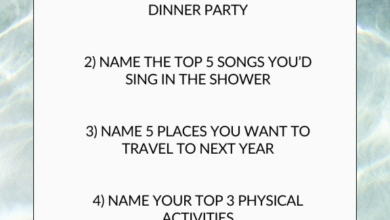The Complete Guide to E12 Bulbs: What They Are and Why You Need Them
If you’ve ever shopped for light bulbs and noticed terms like E12, candelabra base, or B10, you might’ve found yourself a bit confused. Don’t worry, you’re not alone. These labels can seem technical, but once you get the hang of them, you’ll be swapping bulbs like a pro. Today, we’re diving deep into one of the most popular and versatile types of light bulbs out there — the E12 bulb.
Let’s break it all down so you not only understand what an E12 bulb is but also how and where to use it, the types available, and tips for choosing the right one.
What Exactly Is an E12 Bulb?
So, first things first — what does E12 even mean? Well, it’s simpler than you might think.
The “E” stands for Edison screw, a standard light bulb socket named after Thomas Edison. It’s the type of screw-in base most of us are familiar with — just twist the bulb in, and you’re good to go. The “12” refers to the diameter of the base in millimeters. So, an E12 bulb has a 12mm diameter screw base. It’s also commonly called a candelabra base because it’s often used in decorative lighting fixtures like chandeliers or sconces.
These bulbs are smaller than the standard E26 bulbs you see in most lamps and ceiling fixtures. Think of them as the little siblings in the bulb family. But don’t let their size fool you — they pack a punch in style and function.
You’ll usually find E12 bulbs in fancy light fixtures where aesthetics matter. They often mimic the look of a flame or candle, making them perfect for creating that cozy, vintage vibe in your home.
Common Uses of E12 Bulbs
One of the coolest things about E12 bulbs is how versatile they are. Despite their small size, they show up in all kinds of places around the house.
1. Chandeliers:
This is the classic use case. E12 bulbs are practically synonymous with chandeliers. Whether it’s a dramatic piece in a grand foyer or a small elegant fixture over your dining table, these bulbs fit perfectly and add a touch of refinement.
2. Wall Sconces and Vanity Lights:
E12 bulbs are ideal for sconces and vanity mirrors where space is limited, but style is essential. Their compact size allows for sleek fixture designs, and the variety in bulb shapes helps match the aesthetics.
3. Ceiling Fans and Accent Lighting:
Many ceiling fans, especially the ones with multiple small glass shades, use E12 bulbs. They’re also used in accent lighting — think fairy lights, decorative string lights, or small lamps that are more about mood than brightness.
The takeaway here is: if the light fixture is stylish, compact, or decorative — chances are, it uses an E12 bulb.
Types of E12 Bulbs: Not Just One-Size-Fits-All
Even within the E12 family, there’s a surprising variety of bulbs to choose from. Depending on your fixture and what kind of vibe you’re going for, the options can really make a difference.
1. Incandescent E12 Bulbs:
These are the traditional kind, and while they’re being phased out in many places due to energy efficiency regulations, they’re still around. People love them for the warm, soft glow they emit. However, they tend to use more energy and have shorter lifespans.
2. LED E12 Bulbs:
This is the go-to option nowadays. LED E12 bulbs are energy-efficient, long-lasting, and available in multiple color temperatures (from warm white to daylight). They also come in dimmable options, which is great for setting the mood in different rooms.
3. Halogen and CFL E12 Bulbs:
These are less common but still found in specialty lighting. Halogens offer a brighter, whiter light and decent energy savings over incandescent. Compact fluorescents (CFLs) are more energy-efficient but often take a second to warm up and aren’t always dimmable.
4. Specialty Bulbs:
There are flame-tip bulbs, globe-shaped bulbs, and even vintage-style filament E12 bulbs that look like they came out of a 1920s movie. If aesthetics matter in your design, it’s worth exploring these options.
How to Choose the Right E12 Bulb
With so many options on the market, picking the right E12 bulb might seem overwhelming at first — but it doesn’t have to be. Here’s what to consider.
1. Wattage and Lumens:
Don’t just go by wattage — focus on lumens, which measure brightness. LED bulbs use far less wattage to produce the same amount of light. For example, a 5-watt LED might be equivalent to a 40-watt incandescent in brightness.
2. Color Temperature:
Do you want a warm and cozy atmosphere or a bright and energetic feel?
- 2700K – 3000K is warm white, ideal for bedrooms and living rooms.
- 4000K – 5000K is cool white or daylight, great for task lighting or bathrooms.
3. Dimmability:
If your fixture is on a dimmer switch, make sure your bulb is compatible. Not all LED E12 bulbs are dimmable, so check the packaging or product description.
4. Shape and Style:
The shape of the bulb affects the look of your fixture. A flame-tip bulb might look great in a chandelier, while a round globe bulb might better suit a modern sconce. Choose what complements your space best.
Pros and Cons of E12 Bulbs
Let’s weigh the good and the not-so-great aspects of E12 bulbs. Every lighting solution has its ups and downs, right?
Pros:
- Stylish and Decorative: E12 bulbs often come in visually appealing designs that enhance the look of your fixtures.
- Compact: Their small size makes them ideal for tight or delicate lighting arrangements.
- Energy-Efficient Options: LED E12 bulbs save energy and reduce electricity bills.
- Variety: Available in many shapes, styles, and colors.
Cons:
- Less Brightness: Since they’re small, they’re generally not meant for lighting up large spaces on their own.
- Compatibility Issues: Not all E12 bulbs work with dimmers or smart lighting systems.
- Limited Base Size: The E12 screw base limits your fixture choices if you’re trying to repurpose a bulb.
But for what they’re meant to do — look good and provide focused, decorative light — E12 bulbs really shine.
Tips for Getting the Most Out of Your E12 Bulbs
Just a few final pointers to help you get the best bang for your buck and ensure your bulbs perform well.
- Buy in bulk: E12 bulbs are often used in multi-light fixtures, so having extras on hand is smart.
- Double-check voltage: Especially if you’re buying online. Some E12 bulbs are designed for 220V systems, while others are for 110V.
- Consider smart options: Yes, smart E12 bulbs exist! If you’re building a smart home, you can control them with your voice or phone.
- Look for warranty info: Good LED E12 bulbs often come with warranties — a sign the manufacturer stands behind their product.
Final Thoughts
E12 bulbs might be small, but they’re mighty in terms of design and versatility. Whether you’re upgrading a vintage chandelier, adding mood lighting to your bedroom, or just replacing a burned-out vanity bulb, knowing your way around E12s can make the process a whole lot smoother.



